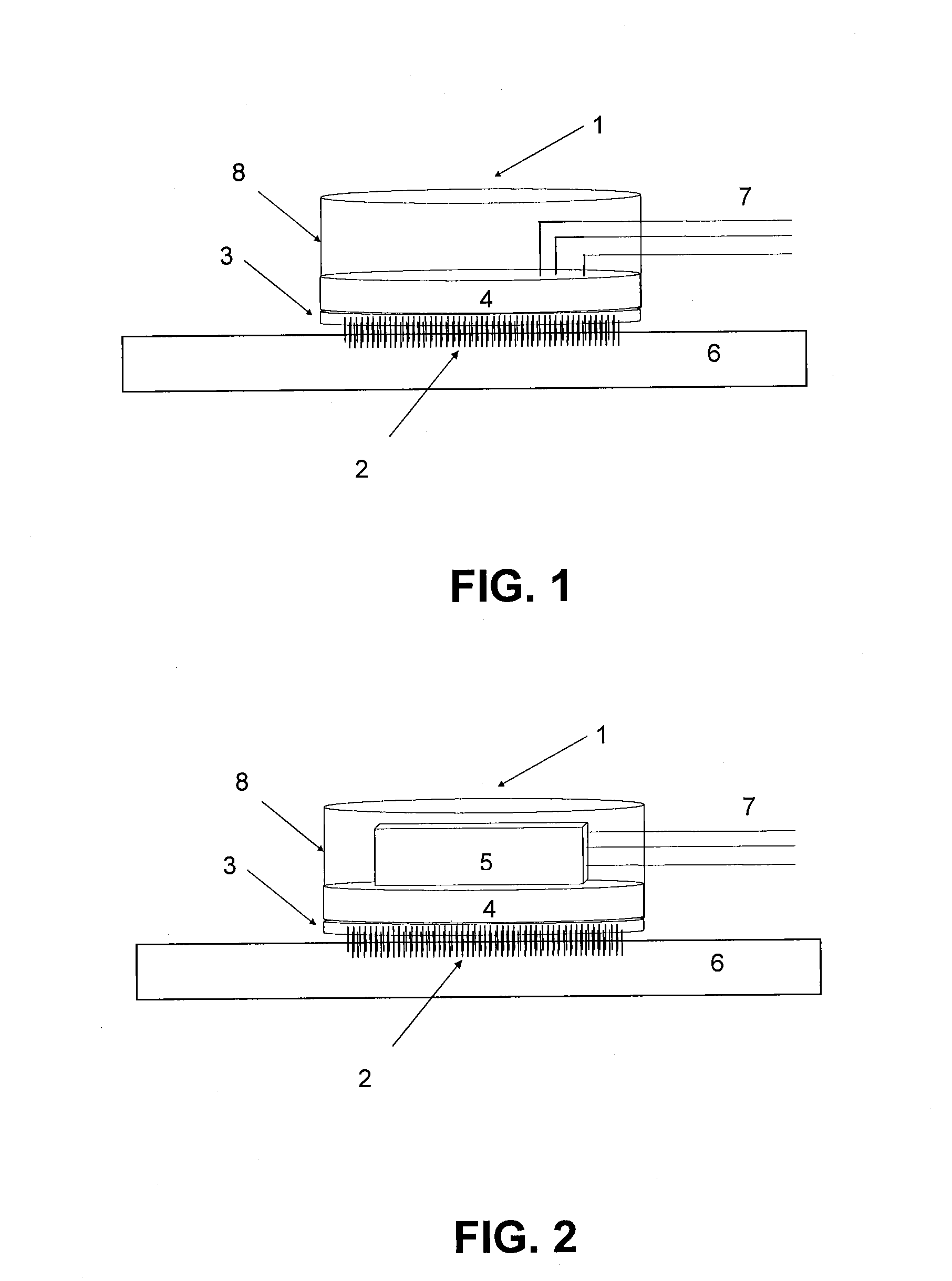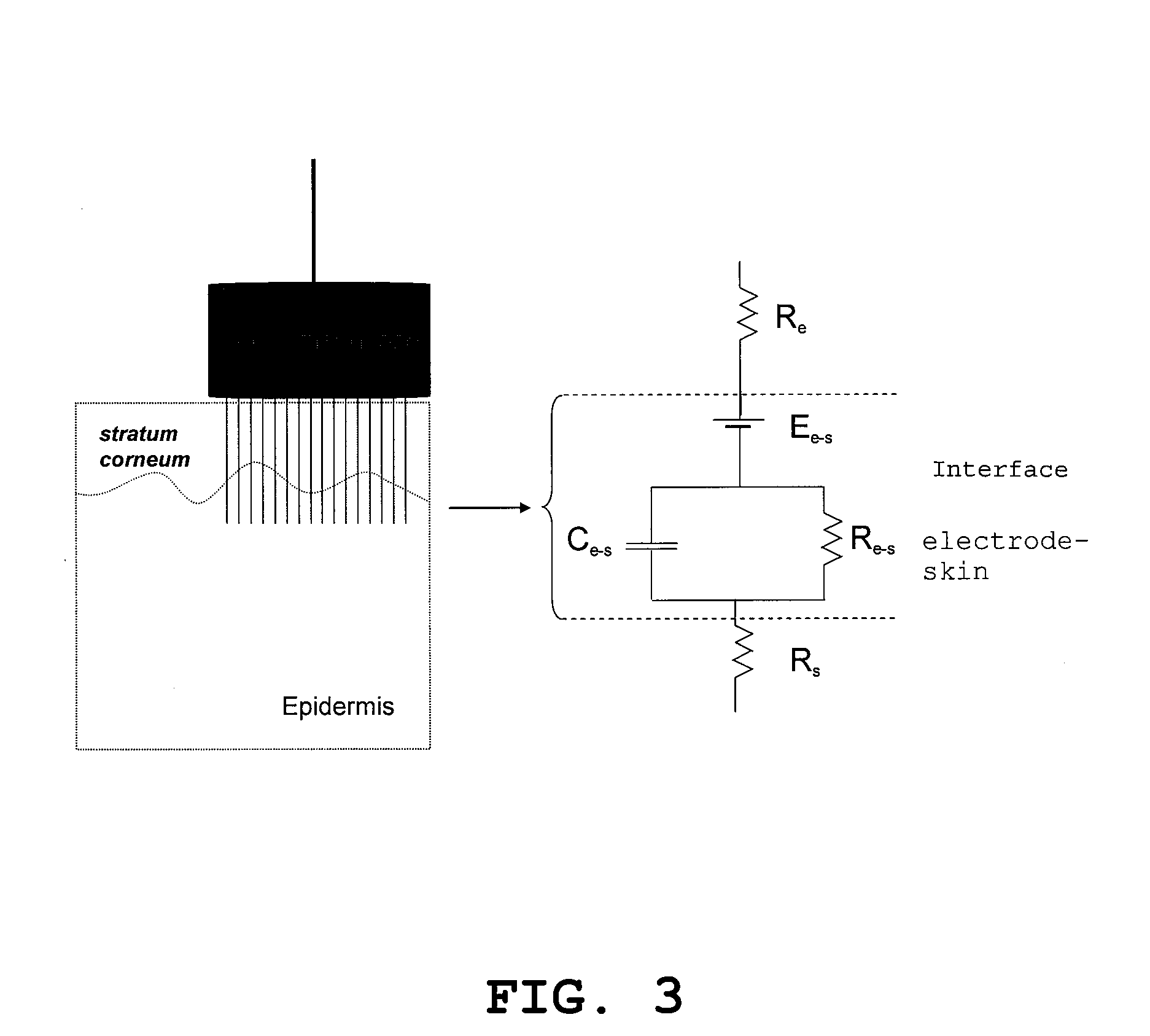Electrophysiological sensor, weak electrical signal conditioning circuit and method for controlling said circuit
- Summary
- Abstract
- Description
- Claims
- Application Information
AI Technical Summary
Benefits of technology
Problems solved by technology
Method used
Image
Examples
first embodiment
[0031]In a first embodiment the electrophysiological sensor of the invention comprises an envelopment casing housing said connector and which has associated to an outer wall the mentioned conducting substrate supporting the nanostructures.
[0032]According to a second preferred embodiment it has been provided that the sensor includes a local amplifier in association with said connector.
[0033]In an even more improved third version the sensor additionally includes a circuit for a treatment (pre-processing or processing) or at least partial adaptation of the weak electrical signals captured from the skin.
[0034]In an even more improved fourth version, the incorporation of an electronic circuit for transmitting the data captured by the sensor, by radiofrequency, to a remote management point has been provided.
[0035]The transmission and control of the electronic circuit associated to sensor is carried out wirelessly being able to couple, if necessary, other digital communication devices, as ...
second embodiment
[0084]FIG. 2 shows a second embodiment similar to the first in which an amplifier installed inside the cover of the assembly has been added to the sensor;
[0085]FIG. 3 shows an electrical diagram or equivalent circuit representative of the operation of the sensor described by the first aspect of the present invention, the resistance of the sensor, the properties of the interface and other variables being indicated in this depiction;
[0086]FIG. 4 is a schematic depiction of the conditioning circuit proposed by the second aspect of the invention applied to conditioning biopotential signals of a patient, specifically ECG signals, for an embodiment for which the signals come from a single receiver electrode;
[0087]FIG. 5 is a view similar to FIG. 4, but for an embodiment for which the conditioning circuit is applied to conditioning signals coming from two receiver electrodes,
[0088]FIG. 6 shows the method proposed by the third aspect of the invention, for an embodiment, by means of a flow c...
PUM
 Login to View More
Login to View More Abstract
Description
Claims
Application Information
 Login to View More
Login to View More - R&D
- Intellectual Property
- Life Sciences
- Materials
- Tech Scout
- Unparalleled Data Quality
- Higher Quality Content
- 60% Fewer Hallucinations
Browse by: Latest US Patents, China's latest patents, Technical Efficacy Thesaurus, Application Domain, Technology Topic, Popular Technical Reports.
© 2025 PatSnap. All rights reserved.Legal|Privacy policy|Modern Slavery Act Transparency Statement|Sitemap|About US| Contact US: help@patsnap.com



